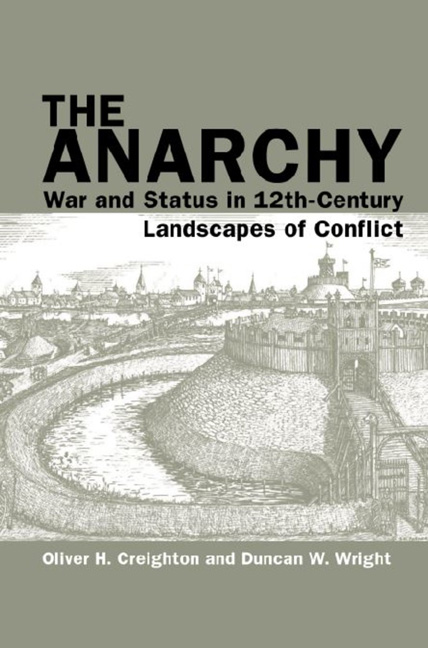Book contents
- Frontmatter
- Contents
- Acknowledgements
- List of Figures
- List of Colour Plates
- Chapter 1 Introduction
- Chapter 2 Historical Outline and the Geography of ‘Anarchy’
- Chapter 3 Waging War: Fields of Conflict and Siege Warfare
- Chapter 4 Architecture and Authority: Castles
- Chapter 5 Material Culture: From Arts to Coins
- Chapter 6 Performing Violence: Arms, Armour and Military Apparel
- Chapter 7 Faith and Fortification: The Church
- Chapter 8 Town, Village and Country
- Chapter 9 Anarchy on the Fen Edge: Case Study of the Isle of Ely
- Chapter 10 The Twelfth-Century Civil War in Context: Assessment and Reassessment
- Appendix Key Sites to Visit
- Bibliography
- Index
- Plate section
Chapter 5 - Material Culture: From Arts to Coins
- Frontmatter
- Contents
- Acknowledgements
- List of Figures
- List of Colour Plates
- Chapter 1 Introduction
- Chapter 2 Historical Outline and the Geography of ‘Anarchy’
- Chapter 3 Waging War: Fields of Conflict and Siege Warfare
- Chapter 4 Architecture and Authority: Castles
- Chapter 5 Material Culture: From Arts to Coins
- Chapter 6 Performing Violence: Arms, Armour and Military Apparel
- Chapter 7 Faith and Fortification: The Church
- Chapter 8 Town, Village and Country
- Chapter 9 Anarchy on the Fen Edge: Case Study of the Isle of Ely
- Chapter 10 The Twelfth-Century Civil War in Context: Assessment and Reassessment
- Appendix Key Sites to Visit
- Bibliography
- Index
- Plate section
Summary
MATERIAL CULTURE – the physical evidence of artefacts and architecture – is of course core to archaeological discourse but has played a very marginal role in previous discussion of ‘the Anarchy.’ While the period's coinage has been the subject of several important studies and is the focus of its own specific debates and literature, a great volume of other evidence – including pottery and other artefacts recovered from archaeological excavations, single finds of artefacts (especially through metal-detecting), architectural sculpture, building remains and environmental evidence – has been badly overlooked. This body of information, which is growing all the time as new discoveries come to light, has much potential to illuminate aspects of everyday life, including at a level below the social elite, but making sense of it comes with a set of challenges – not least the ever-present issue of dating materials precisely to the period in question.
It is important to underline from the outset that it is simply not possible to identify ‘the Anarchy’ as a clear event horizon with most of the evidence explored in this chapter. An obvious exception is the coinage, which represents an exceptional category of material as coins are simultaneously historical sources and everyday items of material culture. If we were to reimagine the mid-twelfth century as a hypothetical prehistoric research context, stripped of all our knowledge and preconceptions of the period based on its documents, it is highly unlikely that archaeologists would identify the ‘signature’ of any great rupture in society or crisis in the landscape. Indeed, the same is broadly true of the Norman Conquest, with key categories of evidence such as pottery showing imperceptible change and the archaeology instead pointing towards life carrying on pretty much as before for the vast majority of people, although a clear horizon of coin hoards deposited in the 1060s and 1070s provides one likely indicator of disruption – at least in some regions (see pg. 149). For the most part, changes in the material evidence occurred over much longer timescales, although political and concomitant economic turmoil could act to variously accelerate and amplify or hold back longer-term processes that were already in train.
New information about twelfth-century portable material culture is being revealed especially through metal-detected finds reported through the Portable Antiquities Scheme.
- Type
- Chapter
- Information
- The AnarchyWar and Status in 12th-Century Landscapes of Conflict, pp. 119 - 153Publisher: Liverpool University PressPrint publication year: 2017

